TerraMaster reached out to us and asked if we were interested in giving their disk enclosure a look over. We've reviewed a few of their NAS devices here at Neowin, but this is quite a different beast. It is basically a multi-disk external storage device that can take two traditional HDDs (or two 2.5 SSDs) and three M.2 NVMe SSDs for a total of five storage devices in one.
Here are the specs of this thing:
| TerraMaster D5 Hybrid | |
|---|---|
| Dimensions: | 222 x 119 x 154 mm |
| Weight: | 1.3kg |
| Power: | 40 W (100V to 240V AC) 50/60 HZ, Single Phase |
| System Fan: | 80 mm x 80 mm x25mm (x 1) |
| Max Noise Level: | 19.0 dB(A) (Using 2 SATA HDDs/SSDs in standby mode) |
| Compatible Disk Types: | 3.5" SATA HDD 2.5" SATA HDD 2.5" SATA SSD |
| Compatible NVMe: | M.2 2280 NVMe Slot (x3) |
| Raw Capacity: | 68 TB (22 TB HDD x 2 + 8 TB NVMe x 3) |
| RAIDs Supported: | SINGLE DISK, JBOD, RAID 0, RAID 1 |
| HDD Sleep: | Yes |
| Ports: | USB3.2 Type-C gen2 (10Gbps) DC IN 12V Barrelport |
| Price: | €239.99 - $219.99 |
First, we should mention a bit of the technical jargon in the specifications; TerraMaster includes a 40W power supply and claims that it tested the D5 using two 22TB Seagate Exos X22 HDDs along with three Samsung 980 NVMe M.2 SSDs in read/write state, and recorded a max usage of 30 Watts. The same setup used 10.1 Watts in hibernation mode, which is what we assume is a combination of the power-saving mode of HDD Sleep and the Smart fan.
In addition, although the MSRP is currently $219.99 according to the official website, it can be purchased on the TerraMaster store on Amazon U.S. for $50 cheaper at just $169.99, or on Amazon UK at £30 cheaper for £209.99 (from March 20th) which is already a big difference in price.
What's in the box
- D5 Hybrid (x1)
- USB Cable C to Type-C (10Gb) 1 Meter (x1)
- Quick Installation Guide (x1)
- Power adapter (x1)
- Screws (several)
- Limited Warranty Note x 1
Design
The design of the D5 Hybrid is actually the same as the F2-212 NAS that we reviewed last October; the front is exactly the same except for the sticker. The two sides with the TerraMaster logo also serve as a grill for air cooling.
Around the back is where you'll find the major differences: instead of two USB ports, we get one Type C 3.2 gen2 port and a screw to set the two HDDs into JBOD, RAID 0, RAID 1, or SINGLE mode. It's essentially a black matt plastic casing that has a slightly textured feel to it.
Installation
While the traditional HDDs (or 2.5-inch SSDs) can be installed in the same tool-less manner as with a NAS, the NVMe M.2 SSD ports are a bit harder to access.
On the official website, the manufacturer says:
TerraMaster has specially designed a side sliding cover for the D5 Hybrid chassis, which is simply pushed aside to install M.2 SSDs. TerraMaster also provides hand-tightened screws, making it easy to install an SSD within 5 seconds.
However, I soon realized that it was not possible to simply slide the side cover off. First I had to remove two screws holding the side cover in place around the back as indicated by the red arrows that I added to the image below. This is also shown on the Quick Install card included in the box, which I failed to read.
The "hand-tightened screws" were exactly as described; they were relatively easy to remove without a screwdriver, and the screws themselves were large enough, even with my sausage fingers, to manage and carefully screw the NVMe M.2 SSDs into place.
Usage
For our tests, I purchased a couple of 6TB second-hand Seagate IronWolf NAS ST6000VN0033 HDDs that are both reported to be in good health (even with 5 years of continuous service under their belts). I was also supplied with three 2 TB Sabrent Rocket 4 Plus SSDs ($174.99 at Amazon U.S., £168.99 at Amazon U.K.) by my contact at Sabrent for the purpose of this review. Thanks William!
The Quick installation guide only shows how to place the HDDs in the sled and install them into the unit, and also (helpfully) shows how to install the NVMe SSDs, which includes instructions on removing the two screws that I mentioned earlier. That meant that I had to reach out to my contact at TerraMaster to find out exactly how to place the two HDDs in RAID because there is no instruction on the official website or user guide in the box.
My contact got back to me with instructions on how to place the HDDs in automatic RAID modes:
Install the HDD1/2 hard disk and put it in the power-on connection state. Select the RAID knob to the RAID mode you need, and then press and hold the RESET button for 5 seconds to make the RAID mode take effect.
If the D5 Hybrid is connected to Windows, you will hear the USB disconnect sound after roughly four seconds. After that, it reconnects, and the two disks are displayed in Windows as one.
As you can see, the NVMe can only ever be accessed as separate drives, and it is not possible to add them into a striped volume. More on that later.
On the official website, it is suggested to download TPC Backupper, which is not included in the box on a USB or onboard storage in the D5 Hybrid. I find that a bit of a shame because even most Razer or Logitech keyboards and mice include the setup program for Synapse or Logitech Options when you connect these devices to your Windows PC.
Upon installing TPC Backupper by AOMEI (which is a link on the official site), a web page automatically opens in the default browser, thanking for a successful installation of what is actually a rebranded version of the free AOMEI Backupper Standard, and it "helpfully" suggests upgrading to a paid version for more features.
It seems like a missed opportunity for TerraMaster to use a first-party app with support for TRAID, and preferably without the nag to upgrade to a paid version of the software, which seems a bit desperate if you ask me.
RAID 0

However, back to the drive setup, first up, we selected RAID 0 for the two 6 TB drives, which gave us a single volume of 10.9 TB in Windows and ran CrystalDiskMark 8.0.5. A peak read of 457MB/s and 431MB/s write is not too shabby for HDD storage.
Next, I decided to emulate a daily backup that I usually do with the excellent SyncFolder, which is basically backing up my Documents and Picture folders from my main PC to my NAS' Cloud drive. For this, I used the TPC Backupper app that I mentioned earlier.
The process took 3m48s to back up 15,001 files in 900 folders totaling 15,1GB into an .afi image file. Restoring back to the same local SSD only took 1m10s, which is impressive.
RAID 1

Next, I placed the D5 in RAID 1 mode and ran CrystalDiskMark again. As you can see, the read and write speeds are considerably affected by the unit having to account for the redundancy data on the 5.45GB volume. Below are some takeaways between RAID 0 and 1.
- sequential reads are up to ~88% faster on RAID 0 or up to ~47% slower on RAID 1
- sequential writes are up to ~92% faster on RAID 0 or up to ~48% slower on RAID 1
- random reads are up to ~63% faster on RAID 0 or up to ~39% slower on RAID 1
- random writes are up to ~122% faster on RAID 0 or up to ~56% slower on RAID 1
Then I ran the same backup job of Documents and Pictures in TPC Backupper, and this time, it was 8 seconds quicker at 3m40s. Restoring took the same 1m10s to complete. However, in a real-world setting, there isn't a noteworthy difference in speed when it comes to backup operations with or without the redundancy of RAID 1, so it is up to you if you need it or not.
RAID 0 but with NVMe (Striped volume)
It is not possible to create a striped volume using the two HDDs and three NVMe SSDs. You could probably use a third-party program if you wanted to maximize the storage space that five disks have to offer (which is totes something I would do, but my colleague Chris White would definitely not do), but then you would be tied to an operating system with that third party program installed on it.
NVMe benchmark

As a final test, I recorded the speed of one of the NVMe SSDs. Given that they are already quicker than the USB 3.2 gen2 link, I didn't find it important to bench all three, but you can expect to see the following:
- sequential reads on a single SSD are up to ~100% (2x) faster or up to ~49% slower on RAID 0
- sequential writes on a single SSD are up to ~140% (2.4x) faster or up to ~60% slower on RAID 0
- random reads on a single SSD are up to ~74x faster
- random writes on a single SSD are up to ~56x faster
The same TPC Backupper job of Documents and Pictures took 3m34s, which is only a few seconds faster than the RAID 1 job and perhaps indicates a bottleneck in the program rather than our D5 link speed. Restoring took 1m08s, which again is not a noticeable difference between RAID 0, 1 HDD, or SSD speeds.
Throughout the tests, I could hear a slight whirring of the HDDs, definitely enough to be annoying to me as a permanent fixture on my desk. However, the whirring sound went away once power saving kicked in after a few minutes of inactivity. TerraMaster also has what it calls an "Intelligent Hard Disk Sleep," which appears to be a Sleep mode that turns off the unit when the PC is put into Sleep mode.

I tried to measure the noise, but it did not register over the (roughly) 50dB of ambient noise of my work-from-home office. The peak in the graph is me picking up my phone to quit the measuring. Without specialist equipment or adequate space to do the measurements, I will have to take TerraMaster's word for under 19dB in standby, but guys... we're interested in how loud it is under use, not when it is "sleeping" anyway. I could hear it, and the whirring was distracting.
Conclusion
First off, let me just say I feel disappointed I was not able to combine all five storage options into one volume. For me, this would have been a cool way to tout this as external backup on steroids; however, you are only ever going to get the chance to combine two HDDs out of the box, meaning you'd have to buy two HDDs that are larger than a single external drive backup can offer to really benefit.
I am not really sure what use the NVMe slots really serve because they must all be accessed independently; they cannot be configured to a striped volume. TerraMaster says it is for "hot data" (frequently accessed data). Given the increased cost of SSD storage, this little unit then offers a means to pool a bunch of smaller-sized SSDs together into one unit, okay kewl.
Therefore, plugging the D5 Hybrid into your PC potentially gives you access to four or five storage disks, depending on if you use RAID 0 or 1. It's a cool way to absolutely ensure your data isn't lost due to an HDD failure. One disk can fail, and you will still have your data on an arguably cheaper than a NAS option with less of a headache to set up. Simply add your two HDDs, turn the screw to RAID 1, and power on (hold reset down for 5 secs to ensure RAID mode).
A single external HDD solution runs between $134.99 (4TB) and $499.99 (22TB), and the D5 Hybrid currently costs $169.99 without any storage, so you would have to want this multi-disk setup. I can see this being for people who want the safety of RAID 1, perhaps as an alternative backup to a NAS.
I feel like it could be improved with TRAID support so that different-sized HDDs can be used, and I would have liked to see TerraMaster use a first-party solution for backup software that is prompted to install when plugging in the unit into Windows for the first time. And for me, a true hybrid would have been a means to use the HDD and SSD together as one, but this isn't possible. It definitely has a use case, but it's very specific in that someone will want redundancy with their external backup or as a small footprint to add a bunch of different drives.
So I said in the title, this is an external backup on steroids you wanted, a cluster of five storage devices in one; however, I do feel that with a few tweaks here and there, it could be improved to be the backup on steroids we all wanted.
You can purchase the TerraMaster D5 Hybrid for $169.99 right now on Amazon U.S., and from March 20th for £209.99 at Amazon UK.
As an Amazon Associate, we earn from qualifying purchases.

















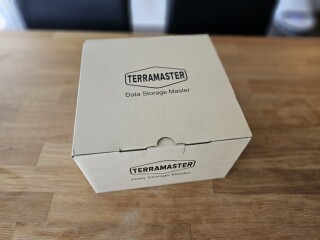
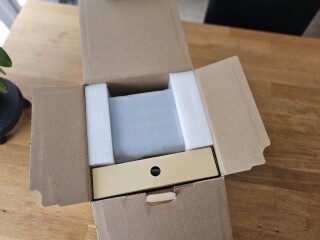
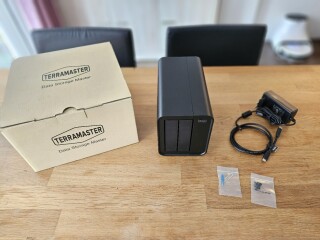
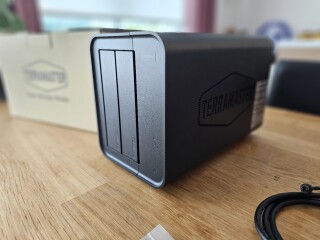
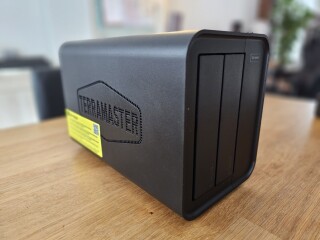
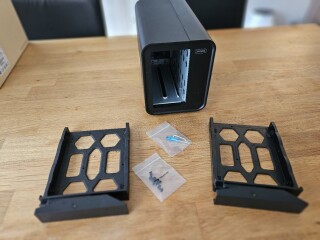
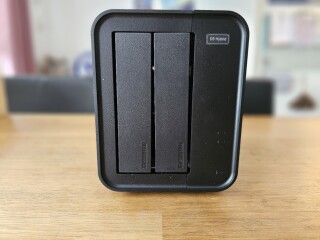
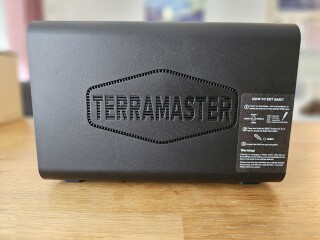
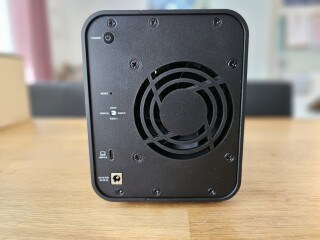
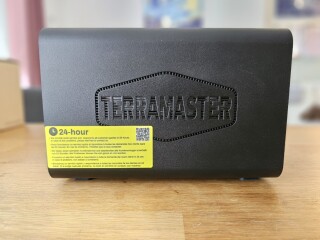
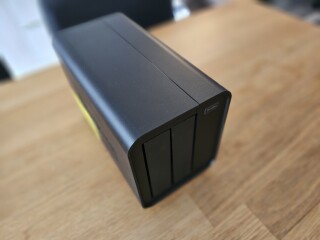
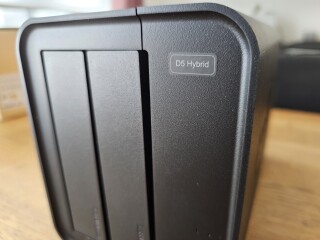
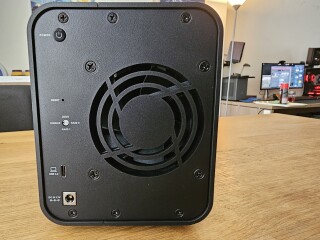
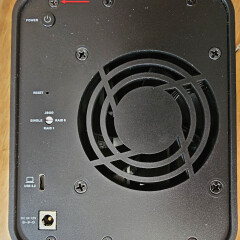
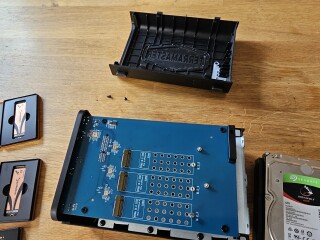
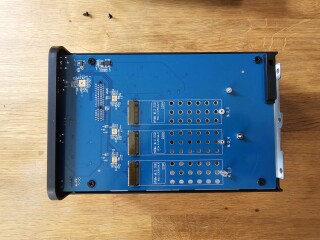
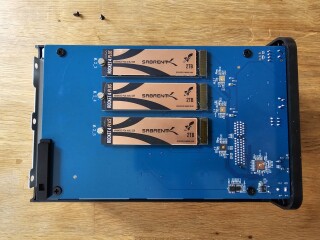
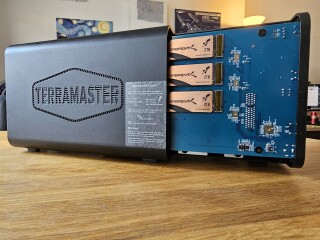
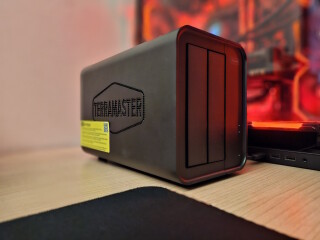









7 Comments - Add comment